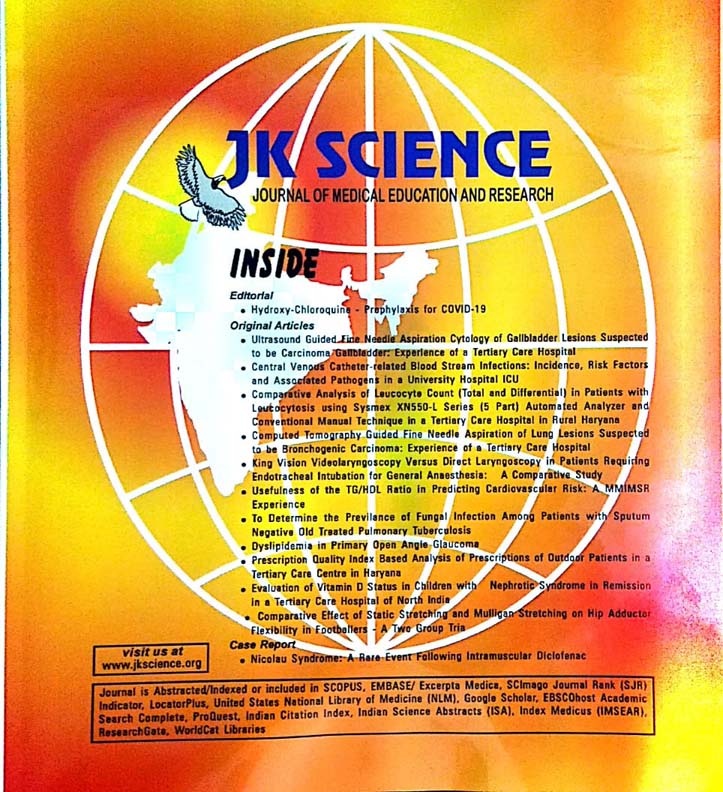Relationship of Hyperuricemia and Metabolic Syndrome
Keywords:
Metabolic syndrome, Uric acid, HyperuricemiaAbstract
Background: The metabolic syndrome (MetS) - also called “the deadly quartet” is a constellation of metabolic abnormalities that confer an increased risk of cardiovascular disease and diabetes mellitus. Hyperuricemia is a well-known risk factor for atherosclerotic events like myocardial infarction and stroke, and is associated with other cardiovascular risk factors like hypertension and dyslipidemia.
Purpose: To study the association of serum uric acid in the causation of metabolic syndrome.
Material and Methods: An observational case control study was conducted in the medicine department in a tertiary care hospital in North India. Cases were selected with age 18 and above with metabolic syndrome IDF criteria. Controls were taken from other persons matched on the basis of age and sex. Hyperuricemia was defined as serum uric acid (UA) concentration >7.0 mg/dL in men or >6.0 mg/dL in women. Data was entered and analysed using SPSS version 25 for windows and Microsoft Excel applications.
Results: The mean age in the cases was 53.53 ± 12.14 years and in controls was 50.12 ± 10.24 years. Majority of patients in metabolic syndrome group were males (65%) vs females (35%) and in the control group were also males (57%) and females (43%). The mean uric acid was 7.07 ± 1.31 mg% in the metabolic syndrome group whereas in the controls was 4.4 ± 1.14 mg%. In our study the overall prevalence of hyperuricemia was 64% in the metabolic syndrome group whereas in the control group, hyperuricemia was seen in only 20% of the individuals (p<0.05).
Conclusion: Substantial high prevalence of hyperuricemia was seen among patients with metabolic syndrome. Serum uric acid level can also be considered as a part of regular follow up of patients with any of the metabolic syndrome components.
Downloads
Downloads
Published
How to Cite
Issue
Section
License
Copyright (c) 2021 JK Science: Journal of Medical Education & Research

This work is licensed under a Creative Commons Attribution-NonCommercial-ShareAlike 4.0 International License.





